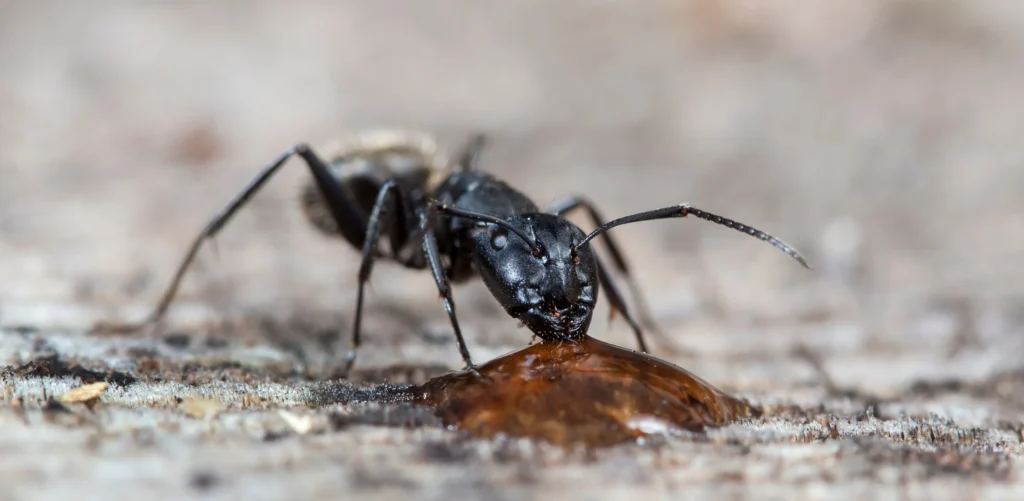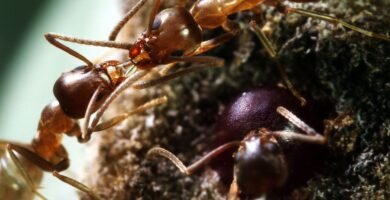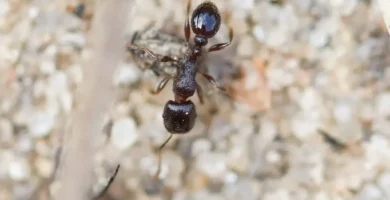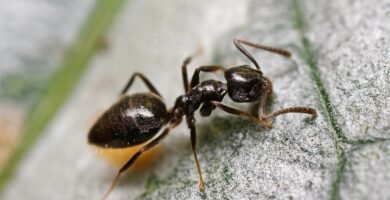
Carpenter ants are a significant concern for homeowners across the United States. Known for their wood-destroying habits, these ants can cause extensive damage to structures if left unchecked. Effective pest control for carpenter ants is crucial to protect your home and maintain a safe living environment. In this article, we will explore the nature of carpenter ants, the problems they create, and the best methods for controlling and preventing infestations.
Table of Contents
Understanding Carpenter Ants as Pests
What are Carpenter Ants?
Carpenter ants are large ants that range in size from 1/4 to 1/2 inch. They are typically black, but some species have reddish or yellowish coloration. Unlike termites, carpenter ants do not eat wood; instead, they excavate it to create smooth, clean tunnels and nests. These ants are commonly found in wooded areas, but they can also invade homes, particularly when searching for food or new nesting sites.
Why are Carpenter Ants a Problem in Homes?
Carpenter ants are problematic because they can cause significant structural damage to homes. Their nesting activities can weaken wooden structures, leading to costly repairs. Additionally, carpenter ants can be challenging to detect until the infestation has become severe. Effective pest control for carpenter ants involves early detection and thorough treatment to prevent extensive damage.
Signs of Carpenter Ant Infestation in Your House
Detecting carpenter ants early is crucial for effective pest control. Common signs of a carpenter ant infestation include:
- Sawdust Piles: As carpenter ants excavate wood, they leave behind small piles of sawdust, known as frass.
- Rustling Noises: You may hear faint rustling sounds coming from walls or ceilings where the ants are active.
- Winged Ants: Swarms of winged ants inside the house indicate that a colony is mature and seeking to expand.
- Visible Ants: Carpenter ants are most active at night, so seeing large ants indoors, especially around kitchens and bathrooms, is a red flag.
How Carpenter Ants Create Problems in U.S. Homes
Damage Caused by Carpenter Ants in Homes
Carpenter ants can cause severe damage by hollowing out wood to build their nests. This damage can compromise the structural integrity of beams, joists, and other wooden components of your home. Over time, this can lead to sagging floors, warped walls, and other serious issues that require expensive repairs.
Differences Between Carpenter Ants and Termites
It’s important to distinguish between carpenter ants and termites, as the pest control methods for each are different. Termites eat wood, while carpenter ants excavate it to build nests. Termite damage often includes mud tubes and hollow-sounding wood, whereas carpenter ant damage results in clean, smooth tunnels. Both pests can cause significant structural damage, but their presence and treatment require different approaches.
Common Areas Where Carpenter Ants are Found Inside Houses
Carpenter ants prefer moist or decaying wood, making certain areas of the house more susceptible to infestation. Common areas where carpenter ants are found include:
- Basements and Crawl Spaces: These areas often have higher moisture levels, making them ideal for carpenter ants.
- Bathrooms and Kitchens: Leaky pipes and damp conditions attract carpenter ants.
- Window and Door Frames: These areas can have gaps and moisture, providing easy access and nesting sites.
- Attics and Roofs: Poor ventilation and water damage can make these areas attractive to carpenter ants.
Effective Pest Control for Carpenter Ants
Identifying the Source of the Infestation
The first step in pest control for carpenter ants is identifying the source of the infestation. This involves locating the nest, which can be challenging due to their hidden nature. Professional pest control services can use specialized equipment and techniques to find and treat nests effectively.
Professional Pest Control Carpenter Ants Strategies
Professional pest control for carpenter ants involves a comprehensive approach that includes inspection, treatment, and prevention. Key strategies include:
- Baiting: Ant baits are effective in attracting and killing carpenter ants. The ants carry the bait back to the nest, spreading the poison to the colony.
- Insecticidal Dust: Applying insecticidal dust to entry points and nest sites can eliminate carpenter ants.
- Spraying: Liquid insecticides can be applied to areas where ants are active. This method is effective for immediate control but may not reach the entire colony.
DIY Carpenter Ant Treatment Options
For those who prefer a do-it-yourself approach, there are several effective carpenter ant treatment options available. However, it’s important to understand that DIY methods may not be as thorough as professional pest control services.
Best Carpenter Ant Killer Products
When selecting a carpenter ant killer, look for products that are specifically designed for carpenter ants. Some of the best carpenter ant killer products include:
- Terro Carpenter Ant & Termite Killer: This product provides long-lasting protection and kills on contact.
- Maxforce Carpenter Ant Bait Gel: This bait gel is highly attractive to carpenter ants and effectively eliminates colonies.
- Bayer Advanced Carpenter Ant & Termite Killer Plus: This product is effective for both ants and termites, providing a dual action treatment.
How to Make Your Own Carpenter Ant Killer
For those who prefer natural or homemade solutions, you can make your own carpenter ant killer using ingredients like boric acid and sugar. Mix equal parts of boric acid and sugar and place the mixture near ant activity. The ants will carry the poisoned sugar back to their nest, eventually killing the colony.
Using Ant Traps for Carpenter Ants
Ant traps can be an effective part of pest control for carpenter ants. Place traps near areas where ants are active, such as along baseboards and near entry points. The traps will attract and kill the ants, reducing the population over time.
Preventing Future Infestations
Maintenance Tips to Keep Carpenter Ants Away
Preventing carpenter ants from entering your home is an essential part of pest control. Regular maintenance and proactive measures can help keep these pests at bay. Key tips include:
- Seal Entry Points: Inspect your home for gaps, cracks, and holes, and seal them to prevent ants from entering.
- Fix Leaks: Repair leaky pipes and faucets to reduce moisture levels in your home.
- Remove Wood Debris: Keep firewood, lumber, and other wood materials away from the foundation of your home.
- Trim Vegetation: Keep trees and shrubs trimmed to prevent them from touching your house and providing a bridge for ants.
How to Get Rid of Carpenter Ants Permanently
Permanent pest control for carpenter ants requires a combination of treatment and prevention. Once the infestation is eliminated, maintaining a dry and sealed environment will help prevent future problems. Regular inspections and prompt repairs of water damage are essential to keeping carpenter ants at bay.
Long-Term Solutions for Pest Control Carpenter Ants
For long-term success in controlling carpenter ants, consider the following strategies:
- Regular Inspections: Schedule annual inspections with a pest control professional to catch any signs of infestation early.
- Moisture Control: Use dehumidifiers in damp areas and ensure proper ventilation in attics and crawl spaces.
- Professional Monitoring: Some pest control services offer monitoring programs that provide ongoing protection and peace of mind.
Other common species of ants in the USA
22 July, 2024

Pest Control for Fire Ants
22 July, 2024

Pest Control for Argentine Ants
22 July, 2024

Pest Control for Pavement Ants
22 July, 2024

Pest Control for Odorous House Ants
Frequently Asked Questions about Carpenter Ant Control
How do I get rid of carpenter ants completely?
The most effective way to get rid of carpenter ants completely is to locate and eliminate the nest. Use a professional exterminator to identify and treat the nest with insecticide. Maintain good sanitation and eliminate moisture sources to prevent future infestations.
How do you make carpenter ant killer?
A simple homemade carpenter ant killer can be made using boric acid and sugar. Mix equal parts of boric acid and sugar and place the mixture near areas of ant activity. The ants will carry the poisoned sugar back to their nest, which will eventually kill the colony. However, for severe infestations, professional-grade products or services may be necessary.
Do ant traps work on carpenter ants?
Ant traps can be effective in controlling carpenter ants. They should be placed near areas of high ant activity, such as along baseboards and near entry points. The traps attract and kill the ants, gradually reducing their population. However, for full eradication, it is important to address the nest directly.
How to get rid of ants permanently inside?
To permanently eliminate ants indoors, it is necessary to destroy their nest and prevent re-entry. This involves using effective ant killers, sealing entry points, and maintaining a dry environment. Regular inspections and prompt repairs of any water damage are also crucial to prevent future infestations.
What is the best carpenter ant killer?
The best carpenter ant killer depends on specific needs and the extent of the infestation. Effective products include Terro Carpenter Ant & Termite Killer, Maxforce Carpenter Ant Bait Gel, and Bayer Advanced Carpenter Ant & Termite Killer Plus. These products offer long-lasting protection and target the entire colony.
Are carpenter ants harmful to humans?
How do professionals treat carpenter ants?
Professionals use a combination of methods to treat carpenter ants, including baiting, insecticidal dust, and liquid insecticides. They conduct thorough inspections to locate nests and use specialized equipment to ensure effective treatment. Professional services are recommended for severe infestations.
Can carpenter ants destroy your house?
How to identify a carpenter ant infestation?
Effective pest control for carpenter ants involves understanding their behavior, identifying signs of infestation, and using a combination of professional and DIY treatment methods. Preventative measures, such as sealing entry points and controlling moisture, are essential for long-term success. By staying vigilant and proactive, you can protect your home from the damaging effects of carpenter ants.
For more information on pest control for other household pests, consult reputable sources such as the Centers for Disease Control and Prevention (CDC) and local pest control professionals.
